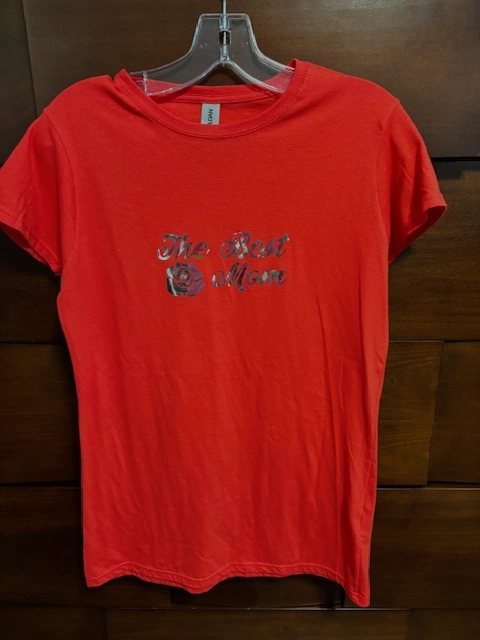Custom-made Scrubs with Embroidery for a Professional Appearance
Wiki Article
The Art of Personalized Needlework: Opening the Secrets to Creating Special and Remarkable Layouts
Embroidery, a craft steeped in custom and creativity, holds within its elaborate stitches the power to change fabric right into a canvas of special expression. The keys to developing custom-made needlework layouts that mesmerize the eye and leave a long lasting perception depend on a fragile balance of method, imagination, and interest to information. As we dig right into the globe of custom-made needlework, we discover the nuanced interaction between string option, sew intricacy, and layout customization that raises a simple garment to an artwork. Join us on a journey through the art of customized embroidery as we decipher the mysteries behind crafting truly unforgettable and distinctive creations.Picking the Right Needlework Threads
When picking embroidery strings, what essential aspects should you consider to ensure the best results for your personalized layouts? The option of needlework string is critical in figuring out the final end result of your embroidered style.
Thicker threads can add measurement and structure to your design, while finer threads are suitable for intricate details and little message. Additionally, thinking about the color fastness and washability of the thread is critical to guarantee that your custom-made styles preserve their quality and vibrancy over time.
Checking Out Different Stitch Strategies
To explore the realm of 'Discovering Different Stitch Methods', one have to realize the ins and outs and subtleties that each stitching technique gives the art of needlework. Various stitch techniques not only include visual rate of interest yet also add to the overall appearance and measurement of the design. One popular stitch technique is the satin stitch, which entails carefully packed parallel stitches to develop a smooth and shiny surface, perfect for filling out forms and producing strong outlines.On the other hand, the backstitch is a versatile technique typically utilized for outlining and adding great details. It involves stitching in reverse to develop a solid line of embroidery. Furthermore, the French knot stitch adds a tactile component to designs, excellent for producing textured accents like blossom facilities or attractive touches.
Discovering different stitch methods permits embroiderers to play with light, shadow, and deepness within their styles, boosting the visual allure and creative high quality of their needlework projects. By grasping numerous stitching approaches, one can unlock limitless opportunities for developing unique and unforgettable custom needlework items.
Incorporating Personalized Style Elements
Having actually explored the intricacies of various stitch methods such as the satin stitch, backstitch, and French knot, the emphasis currently shifts towards integrating customized layout aspects in custom-made embroidery tasks. Personalized style elements play dig this an essential duty in making embroidery projects really unique and memorable.Another way to include tailored design elements is by including icons or themes that hold special definition to the recipient or mirror their rate of interests and personality. For instance, integrating a favorite flower, pet, or hobby-related sign can make the needlework style extra significant and personalized. Furthermore, selecting shades that resonate with the recipient or line up with the intended style can further improve the personalization of the needlework project.
Understanding the Art of Color Coordination
One trick element of shade sychronisation is understanding shade theory. This consists of recognizing how different colors connect with each other, the feelings they convey, and just how they can be incorporated to create visually enticing designs. By using shade theory concepts, embroiderers can create harmonious shade schemes that enhance the general appearance of the design.
Furthermore, focusing on contrast is crucial in color control. Utilizing contrasting shades can help specific components of the design pop, improve clarity, and develop an aesthetically dynamic embroidery piece. By understanding the art of shade coordination, embroiderers can raise their layouts and produce memorable pieces that resonate with clients and audiences alike.
Enhancing Texture With Advanced Embroidery Stitches

French knots, for instance, are best for adding small, increased dots to your style, resembling the look of beads or creating a textured surface. Bullion knots, on the various other hand, can be made use of to develop twisted, ropelike elements that include a lavish feeling to the embroidery. Seed sewing involves little, scattered stitches that can fill up in areas with a multicolor appearance, while turkey job creates cosy, dimensional accents evocative animal fur or foliage. Trying out with these sophisticated needlework stitches enables you to push the borders of traditional embroidery and develop genuinely one-of-a-kind and visually appealing textures in your designs.
Verdict
In conclusion, the art of customized embroidery involves a mix of picking the best threads, exploring different stitch methods, integrating individualized style elements, mastering shade coordination, and boosting structure with advanced stitches. By recognizing and executing these key components, embroiderers can create one-of-a-kind and unforgettable styles that display their imagination and ability. Embroidery enthusiasts can unlock the tricks to developing attractive and custom items that attract attention and leave a long lasting impression.Report this wiki page